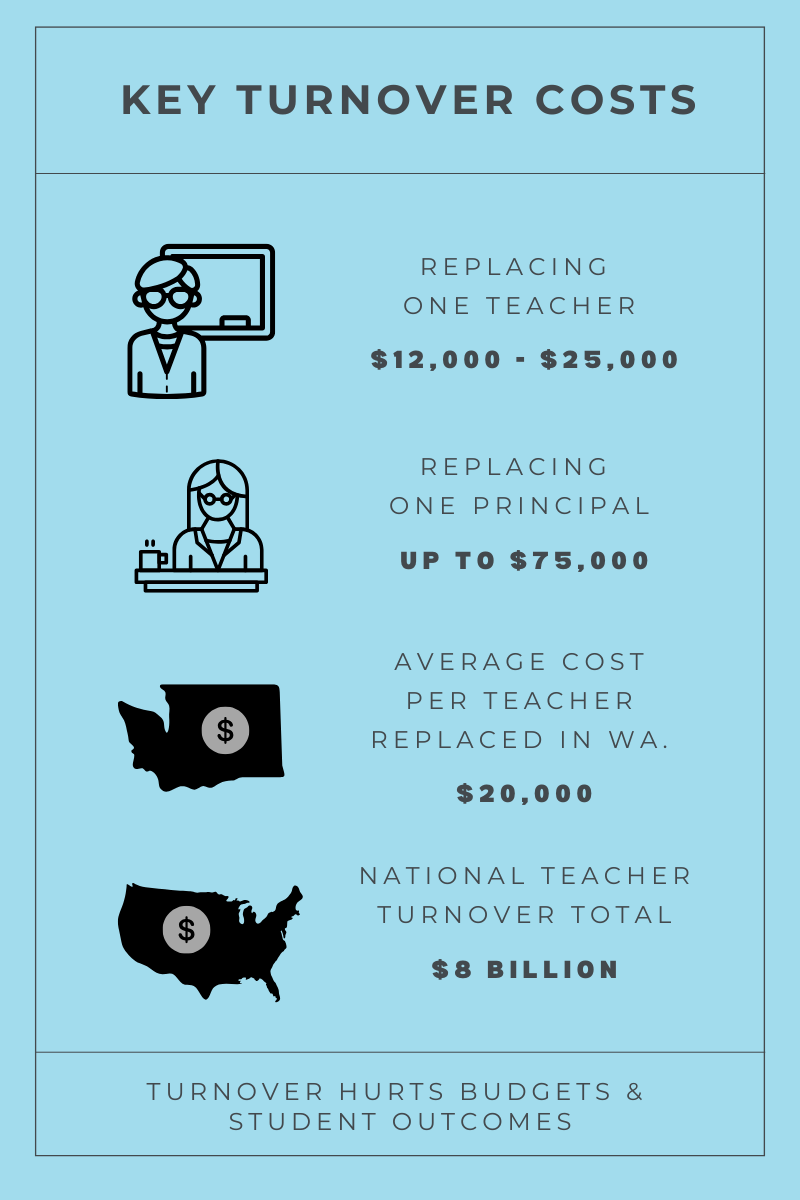The Hidden Cost of Turnover and How School Culture Can Be the Solution
10 MIN READSchool Culture Solution for Turnover
At the Center for Educational Effectiveness (CEE), we believe that improving school culture is not just about morale—it’s about sustainability. Every time a teacher, principal, or support staff member leaves, the ripple effects extend far beyond an empty desk. The cost to replace an employee in a school district can reach tens of thousands of dollars, and the indirect impacts on student learning, staff cohesion, and community trust are even more costly.
The Real Cost of Turnover
Studies show that replacing a single teacher can cost a district $12,000 to $25,000, depending on size and location. Replacing a principal? Up to $75,000. Add in the indirect costs—disrupted student learning, lowered staff morale, and a drain on institutional knowledge—and turnover becomes a recurring six-figure line item for many districts each year.
In Washington state, one analysis found that districts spend an average of $20,000 per teacher who leaves—when accounting for recruitment, onboarding, and lost productivity. For a mid-sized district replacing 25 teachers a year, that’s half a million dollars in direct costs alone.
Nationwide, schools spend an estimated $8 billion a year on teacher turnover.
These are dollars that could otherwise go toward instructional support, student services, or technology upgrades.
Key Turnover Costs
Why Staff Leave—and How Culture Can Keep Them
Research consistently points to school culture and leadership as critical drivers of staff retention. Teachers and principals are more likely to stay when they feel respected, supported, and engaged in a mission-driven environment.
CEE, through our research-based perception surveys, gives educators, students, and families a voice—and helps district leaders identify the cultural strengths and friction points that influence retention. From trust in leadership to collaboration among staff, we help schools measure what matters most to the people who make them work.
These tools help districts create action plans that build healthier, more connected learning communities because they go beyond compliance and focus on continuous improvement.
The ROI of Listening
When districts invest in culture, they save in turnover. For example, reducing annual teacher attrition by just 10% in a mid-sized district can reclaim hundreds of thousands of dollars. Districts can reinvest that reclaimed budget in professional development, mentorship programs, or enhanced student support.
CEE’s surveys provide the diagnostic foundation for that change. By identifying pain points before they lead to resignation letters, districts can act early—and keep the educators and staff who are hardest to replace.
The best part? These cultural improvements also boost student outcomes. Research shows that strong staff collaboration and leadership trust correlate directly with gains in student achievement. In short, when educators thrive, students do too.
A Smarter Investment in Stability
At CEE, we’ve seen firsthand how data-informed school culture work transforms not only climate—but bottom lines. Our partners use survey insights to strengthen leadership pipelines, design targeted supports, and foster the kind of school environments where staff choose to stay.
In a time when education budgets are tighter than ever, cultural improvement isn’t a luxury—it’s a strategy. And one with a measurable return on investment.
Let’s stop paying the price for turnover—and start building the schools where people want to stay.
The True Cost of Turnover
Want to learn how your district can turn culture into a retention strategy?
Contact CEE to explore our surveys and improvement supports. Subscribe Now to CEE Blogs!
Learn more about CEE Solutions





